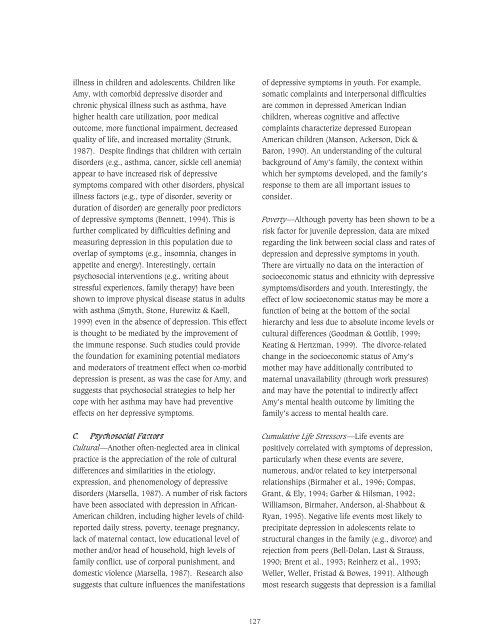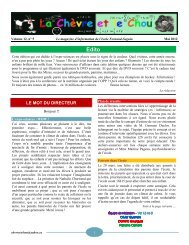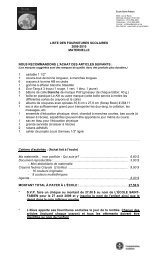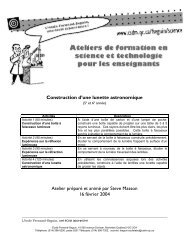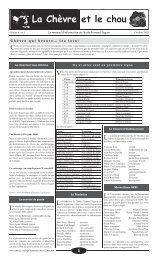Research on Child and Adolescent Mental Health
Research on Child and Adolescent Mental Health
Research on Child and Adolescent Mental Health
You also want an ePaper? Increase the reach of your titles
YUMPU automatically turns print PDFs into web optimized ePapers that Google loves.
illness in children <strong>and</strong> adolescents. <strong>Child</strong>ren like<br />
Amy, with comorbid depressive disorder <strong>and</strong><br />
chr<strong>on</strong>ic physical illness such as asthma, have<br />
higher health care utilizati<strong>on</strong>, poor medical<br />
outcome, more functi<strong>on</strong>al impairment, decreased<br />
quality of life, <strong>and</strong> increased mortality (Strunk,<br />
1987). Despite findings that children with certain<br />
disorders (e.g., asthma, cancer, sickle cell anemia)<br />
appear to have increased risk of depressive<br />
symptoms compared with other disorders, physical<br />
illness factors (e.g., type of disorder, severity or<br />
durati<strong>on</strong> of disorder) are generally poor predictors<br />
of depressive symptoms (Bennett, 1994). This is<br />
further complicated by difficulties defining <strong>and</strong><br />
measuring depressi<strong>on</strong> in this populati<strong>on</strong> due to<br />
overlap of symptoms (e.g., insomnia, changes in<br />
appetite <strong>and</strong> energy). Interestingly, certain<br />
psychosocial interventi<strong>on</strong>s (e.g., writing about<br />
stressful experiences, family therapy) have been<br />
shown to improve physical disease status in adults<br />
with asthma (Smyth, St<strong>on</strong>e, Hurewitz & Kaell,<br />
1999) even in the absence of depressi<strong>on</strong>. This effect<br />
is thought to be mediated by the improvement of<br />
the immune resp<strong>on</strong>se. Such studies could provide<br />
the foundati<strong>on</strong> for examining potential mediators<br />
<strong>and</strong> moderators of treatment effect when co-morbid<br />
depressi<strong>on</strong> is present, as was the case for Amy, <strong>and</strong><br />
suggests that psychosocial strategies to help her<br />
cope with her asthma may have had preventive<br />
effects <strong>on</strong> her depressive symptoms.<br />
C. Psychosocial Factors<br />
Cultural—Another often-neglected area in clinical<br />
practice is the appreciati<strong>on</strong> of the role of cultural<br />
differences <strong>and</strong> similarities in the etiology,<br />
expressi<strong>on</strong>, <strong>and</strong> phenomenology of depressive<br />
disorders (Marsella, 1987). A number of risk factors<br />
have been associated with depressi<strong>on</strong> in African-<br />
American children, including higher levels of childreported<br />
daily stress, poverty, teenage pregnancy,<br />
lack of maternal c<strong>on</strong>tact, low educati<strong>on</strong>al level of<br />
mother <strong>and</strong>/or head of household, high levels of<br />
family c<strong>on</strong>flict, use of corporal punishment, <strong>and</strong><br />
domestic violence (Marsella, 1987). <str<strong>on</strong>g>Research</str<strong>on</strong>g> also<br />
suggests that culture influences the manifestati<strong>on</strong>s<br />
of depressive symptoms in youth. For example,<br />
somatic complaints <strong>and</strong> interpers<strong>on</strong>al difficulties<br />
are comm<strong>on</strong> in depressed American Indian<br />
children, whereas cognitive <strong>and</strong> affective<br />
complaints characterize depressed European<br />
American children (Mans<strong>on</strong>, Ackers<strong>on</strong>, Dick &<br />
Bar<strong>on</strong>, 1990). An underst<strong>and</strong>ing of the cultural<br />
background of Amy’s family, the c<strong>on</strong>text within<br />
which her symptoms developed, <strong>and</strong> the family’s<br />
resp<strong>on</strong>se to them are all important issues to<br />
c<strong>on</strong>sider.<br />
Poverty—Although poverty has been shown to be a<br />
risk factor for juvenile depressi<strong>on</strong>, data are mixed<br />
regarding the link between social class <strong>and</strong> rates of<br />
depressi<strong>on</strong> <strong>and</strong> depressive symptoms in youth.<br />
There are virtually no data <strong>on</strong> the interacti<strong>on</strong> of<br />
socioec<strong>on</strong>omic status <strong>and</strong> ethnicity with depressive<br />
symptoms/disorders <strong>and</strong> youth. Interestingly, the<br />
effect of low socioec<strong>on</strong>omic status may be more a<br />
functi<strong>on</strong> of being at the bottom of the social<br />
hierarchy <strong>and</strong> less due to absolute income levels or<br />
cultural differences (Goodman & Gottlib, 1999;<br />
Keating & Hertzman, 1999). The divorce-related<br />
change in the socioec<strong>on</strong>omic status of Amy’s<br />
mother may have additi<strong>on</strong>ally c<strong>on</strong>tributed to<br />
maternal unavailability (through work pressures)<br />
<strong>and</strong> may have the potential to indirectly affect<br />
Amy’s mental health outcome by limiting the<br />
family’s access to mental health care.<br />
Cumulative Life Stressors—Life events are<br />
positively correlated with symptoms of depressi<strong>on</strong>,<br />
particularly when these events are severe,<br />
numerous, <strong>and</strong>/or related to key interpers<strong>on</strong>al<br />
relati<strong>on</strong>ships (Birmaher et al., 1996; Compas,<br />
Grant, & Ely, 1994; Garber & Hilsman, 1992;<br />
Williams<strong>on</strong>, Birmaher, Anders<strong>on</strong>, al-Shabbout &<br />
Ryan, 1995). Negative life events most likely to<br />
precipitate depressi<strong>on</strong> in adolescents relate to<br />
structural changes in the family (e.g., divorce) <strong>and</strong><br />
rejecti<strong>on</strong> from peers (Bell-Dolan, Last & Strauss,<br />
1990; Brent et al., 1993; Reinherz et al., 1993;<br />
Weller, Weller, Fristad & Bowes, 1991). Although<br />
most research suggests that depressi<strong>on</strong> is a familial<br />
127


